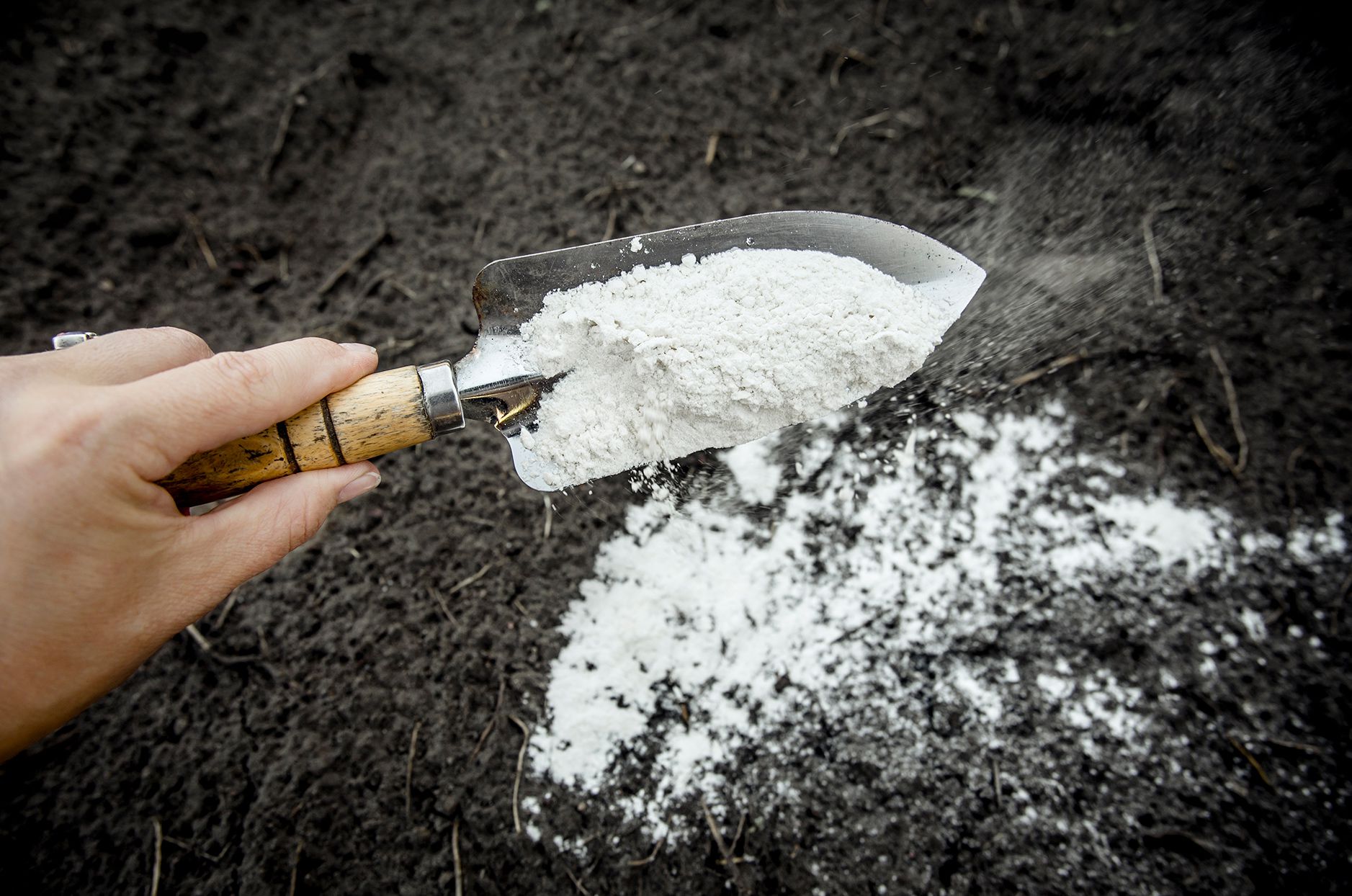

Articles
What Does Garden Lime Do
Modified: October 19, 2024
Enhance your gardening with garden lime! Discover what garden lime does and how it can benefit your plants. Improve soil pH and promote healthy plant growth today!
(Many of the links in this article redirect to a specific reviewed product. Your purchase of these products through affiliate links helps to generate commission for Storables.com, at no extra cost. Learn more)
Introduction
Welcome to the wonderful world of gardening! Whether you’re a seasoned green thumb or just starting out on your gardening journey, you’ve probably heard about the importance of maintaining optimal soil pH levels. One simple, yet incredibly effective tool in achieving this balance is garden lime. In this article, we will delve into the fascinating world of garden lime, exploring its benefits, applications, and precautions to help you make the most of this invaluable gardening tool.
Garden lime, also known as agricultural lime or lime soil conditioner, is a natural substance that is primarily composed of calcium carbonate. It is derived from limestone, a sedimentary rock formed from the remains of ancient marine organisms. Garden lime has been used for centuries to improve soil fertility and enhance plant growth.
So, what exactly does garden lime do? Well, garden lime plays a vital role in adjusting soil pH levels. pH is a measure of acidity or alkalinity, on a scale of 0 to 14. A pH level below 7 denotes acidic soil, while a pH level above 7 indicates alkaline soil. Most plants thrive in slightly acidic to neutral soil, with a pH range of 6 to 7.5. When the soil pH deviates from this range, it can hinder nutrient availability, affecting plant health and growth.
The main benefit of garden lime is its ability to neutralize acidic soil by raising the pH level. It does so by releasing calcium ions into the soil, which displaces hydrogen ions, the main culprits behind soil acidity. By increasing the pH level, garden lime creates a more favorable environment for beneficial soil organisms and nutrient availability, ensuring optimal plant growth.
In addition to adjusting pH levels, garden lime offers a host of other benefits. It helps to break up heavy clay soils, improving their structure and enhancing drainage. This allows plant roots to penetrate the soil more easily and promotes healthier plant growth. Garden lime also adds essential calcium and magnesium to the soil, both of which are vital nutrients for plant development.
Now that we have a better understanding of what garden lime does and its benefits, let’s explore how to determine if your soil requires lime and the proper application methods. Join us in the next section as we uncover the fascinating world of soil pH and garden lime.
Key Takeaways:
- Garden lime is a versatile tool that adjusts soil pH, improves nutrient uptake, and enhances soil structure, promoting healthy plant growth. However, it should be used judiciously and in accordance with soil testing results to avoid over-liming.
- Understanding soil pH and the role of garden lime is crucial for successful gardening. Proper application methods, precautions, and considerations are essential to ensure safe and effective use of garden lime, contributing to a holistic soil management plan.
Read more: What Does Lime Do To The Grass
Understanding Garden Lime
Before we dive into the benefits and applications of garden lime, let’s take a closer look at what it actually is and how it works. As mentioned earlier, garden lime is primarily composed of calcium carbonate, derived from limestone. This natural substance is available in different forms, such as pulverized, granular, or hydrated lime.
Garden lime works by neutralizing acidic soil and raising the pH level. Acidic soil occurs when the concentration of hydrogen ions is high, making it difficult for plants to absorb essential nutrients. Calcium carbonate in garden lime reacts with these hydrogen ions, forming water and carbon dioxide, thereby reducing soil acidity.
It’s important to note that garden lime is not suitable for all soil types. While it can be highly beneficial for acidic soils, it may not be necessary or even advisable for soils with already neutral or alkaline pH levels. It’s essential to determine your soil’s pH before applying garden lime to ensure proper soil balance.
Testing your soil’s pH is a straightforward process. You can purchase a soil testing kit from a garden center or send a sample to a local agricultural extension service for analysis. These tests will provide you with accurate pH readings and indicate whether your soil requires amendments, such as garden lime.
Typically, garden lime is recommended for acidic soils with a pH level below 6. Adjusting the pH level to a more neutral range in these cases allows for optimal nutrient availability and promotes healthy plant growth. However, it’s crucial to strike the right balance, as excessive liming can also have detrimental effects on plants.
When determining how much garden lime to apply, the recommended amount varies based on your soil type and current pH level. It’s best to follow the specific instructions provided on the packaging or consult with a local gardening expert. In general, a lime requirement calculator can be used to determine the appropriate application rate based on your soil’s characteristics.
It’s also worth mentioning that garden lime takes time to have an impact on soil pH. The process of raising the pH level is gradual and may take several months to a year. Thus, patience is key when applying garden lime, and monitoring the soil pH periodically is essential to ensure proper adjustment.
Now that we have a better understanding of garden lime and how it works, let’s explore its numerous benefits and learn how to apply it effectively to improve your garden’s soil. Join us in the next section as we delve into the incredible benefits of this versatile gardening tool!
The Benefits of Garden Lime
Garden lime offers a multitude of benefits for your garden and plants. Understanding these benefits will help you harness the power of this valuable gardening tool effectively. Let’s explore some of the key advantages of using garden lime in your garden:
- Adjusts Soil pH: The primary benefit of garden lime is its ability to neutralize acidic soil and raise the pH level. By increasing the pH, garden lime creates a more balanced and favorable environment for plants to thrive. It allows for better nutrient availability, as many essential plant nutrients become more readily accessible in slightly acidic to neutral soil.
- Improves Nutrient Uptake: Proper pH balance facilitated by garden lime enhances nutrient uptake by plant roots. Acidic soil conditions can limit the availability of certain nutrients, even if they are present in the soil. By raising the pH, garden lime unlocks these nutrients, ensuring that plants can absorb them effectively for optimal growth and development.
- Enhances Soil Structure: Garden lime benefits more than just the pH level. It helps to improve soil structure and texture, particularly in heavy clay soils. Clay soils tend to be compacted, leading to poor drainage and restricted root growth. Garden lime helps to break up the compacted soil particles, making it easier for plant roots to penetrate and ensuring better aeration and water drainage.
- Supplies Essential Nutrients: Garden lime is a rich source of calcium and magnesium, essential nutrients for plant growth. These nutrients play crucial roles in various plant physiological processes, including cell development, enzyme activation, and nutrient transport. By incorporating garden lime into your soil, you’re providing a natural source of these vital nutrients, promoting healthy plant growth.
- Encourages Beneficial Soil Organisms: Garden lime creates an environment that is more conducive to beneficial soil organisms, such as earthworms and beneficial bacteria. These organisms play a vital role in breaking down organic matter, cycling nutrients, improving soil structure, and enhancing overall soil health. By using garden lime, you’re creating an ecosystem that supports the growth of these beneficial soil organisms, which, in turn, help to foster healthy plant growth.
It’s important to note that while garden lime offers numerous benefits, it should be used judiciously and in accordance with your soil’s needs. Excessive or unnecessary applications of garden lime can lead to over-alkaline soil conditions, which can be just as detrimental to plant growth as acidic soil. Therefore, it’s important to perform a soil pH test, monitor its progress, and follow recommended application rates to maintain a healthy and balanced soil environment.
Now that we’ve explored the benefits of garden lime, it’s time to learn how to apply it effectively to optimize your garden’s soil pH. Join us in the next section as we delve into the process of applying garden lime!
Soil pH and Garden Lime
Understanding soil pH is crucial for successful gardening, and garden lime plays a significant role in maintaining optimal pH levels. pH is a measure of the acidity or alkalinity of the soil, and it affects the availability of essential nutrients to plants. Let’s delve deeper into the relationship between soil pH and garden lime:
Soil pH is measured on a scale from 0 to 14, with a pH of 7 considered neutral. Anything below 7 is acidic, while anything above 7 is alkaline. Most plants prefer slightly acidic to neutral soil conditions, with a pH range of 6 to 7.5. When the pH deviates from this range, plants face difficulties in absorbing essential nutrients, leading to stunted growth and nutrient deficiencies.
Acidic soils, with a pH below 6, are common in many regions. This acidity is often caused by factors such as heavy rainfall, leaching of minerals, or the decomposition of organic matter. Acidic soils create an environment where certain nutrients, such as nitrogen, phosphorus, and potassium, become less available to plants. Additionally, high acidity levels can lead to the accumulation of harmful elements like aluminum and manganese, which can be toxic to plants.
Garden lime helps to counteract soil acidity by raising the pH level. It does this through a process called neutralization, where it releases calcium ions into the soil, displacing the hydrogen ions responsible for acidity. As the pH level increases, the soil becomes more neutral, enhancing nutrient availability and promoting healthy plant growth.
On the other hand, alkaline soils, with a pH above 7.5, can pose challenges for plant growth as well. In alkaline soils, certain nutrients, such as iron, manganese, and zinc, become less available to plants. However, applying garden lime to alkaline soils is not recommended, as it can further increase the pH level, exacerbating nutrient deficiencies and negatively impacting plant growth.
It’s important to note that the effectiveness of garden lime in adjusting soil pH depends on the soil type and composition. Sandy soils, for example, tend to be more acidic and require regular applications of garden lime. Clay soils, however, have a higher buffering capacity, meaning they can resist changes in pH. Applying garden lime to clay soils should be approached with caution and based on soil testing results.
To determine the pH level of your soil, you can use a soil testing kit or send a soil sample to a local agricultural extension service for analysis. These tests will help you understand your soil’s characteristics and determine whether or not it requires the application of garden lime.
Now that we understand the importance of soil pH and the role of garden lime in adjusting it, let’s move on to the practical aspect of applying garden lime to your garden. Join us in the next section as we explore the different types of garden lime and the proper methods of application.
Applying garden lime can help to raise the pH level of acidic soil, making it more alkaline and improving the availability of nutrients to plants. It also helps to reduce the toxicity of aluminum in the soil.
Applying Garden Lime to Your Garden
When it comes to applying garden lime, it’s essential to follow proper methods to ensure maximum effectiveness and avoid any potential issues. Here are some key considerations and steps to take when applying garden lime to your garden:
- Soil Testing: Before applying garden lime, it’s crucial to determine your soil’s pH level. You can do this by using a soil testing kit or sending a sample to a local agricultural extension service for analysis. Knowing your soil’s pH will help you determine if lime application is necessary and the appropriate amount to use.
- Timing: The best time to apply garden lime is in the late fall or early spring. These seasons provide ample time for the lime to react with the soil and adjust the pH before the growing season begins. Avoid applying garden lime during periods of intense heat or drought.
- Calculate the Application Rate: The amount of garden lime you need to apply depends on several factors, including your soil’s current pH level and its texture. It’s best to consult a local gardening expert or use a lime requirement calculator to determine the appropriate application rate for your specific soil conditions.
- Spread the Lime: Once you have determined the correct application rate, evenly distribute the garden lime across the soil surface. You can use a broadcast spreader for larger areas, or simply spread it by hand for smaller garden beds. Make sure to wear gloves and protective clothing when handling garden lime.
- Incorporate the Lime into the Soil: After spreading the garden lime, gently work it into the soil using a rake or garden fork. This will help mix the lime with the top layer of soil, ensuring even distribution and promoting its effectiveness in adjusting the pH.
- Water the Area: Once the lime has been incorporated into the soil, thoroughly water the area to help activate the lime and aid its penetration into the soil. This step is especially crucial in regions with low rainfall or if the application is done during dry periods.
- Monitor and Retest: After applying garden lime, it’s important to monitor the soil pH periodically to ensure that it remains within the desired range. Retesting the soil every 6 to 12 months is recommended to assess the effectiveness of the lime application and make any necessary adjustments.
Remember, garden lime takes time to fully adjust the soil pH, so be patient and allow several months for the lime to take effect. Additionally, for established gardens, it’s advisable to apply garden lime in smaller amounts over multiple years rather than applying a large amount all at once. This gradual approach allows for better control and prevents over-liming.
It’s also worth mentioning that different types of garden lime are available, such as fast-acting lime and dolomitic lime. Fast-acting lime reacts more quickly with the soil, but its effects may not be as long-lasting. Dolomitic lime contains additional magnesium, which can be beneficial in soils deficient in this nutrient. Consider your soil’s requirements and specific needs when choosing the type of garden lime to use.
By following these steps and guidelines, you can effectively apply garden lime to your garden and ensure optimal pH levels for healthy plant growth. Now, let’s explore the different types of garden lime available to help you make an informed choice for your gardening needs.
Read more: What Do Gardeners Do
Types of Garden Lime
When it comes to choosing garden lime for your gardening needs, there are a few different types available, each with its own unique characteristics and benefits. Let’s explore the various types of garden lime:
- Pulverized Lime: Also known as powdered lime or agricultural lime, pulverized lime is a finely ground form of garden lime. It is commonly used to adjust soil pH and improve nutrient availability. The fine particles of pulverized lime are easier to spread and incorporate into the soil, allowing for quick reaction and pH adjustment.
- Granular Lime: Granular lime is similar to pulverized lime but is formulated into small granules for easier application. It provides the same benefits of pH adjustment and nutrient enhancement as pulverized lime, but the granular form allows for better control and precise application. Granular lime is often used on lawns or larger garden areas.
- Hydrated Lime: Hydrated lime, also known as slaked lime or garden lime, is calcium hydroxide in powder form. It is produced by adding water to quicklime, a fast-reacting lime compound obtained by heating limestone. Hydrated lime is more concentrated than other forms of garden lime and can be used to rapidly raise soil pH levels. However, it should be applied with caution, as excessive use can lead to over-liming and potentially harm plants.
- Dolomitic Lime: Dolomitic lime is a type of garden lime that contains a significant amount of magnesium in addition to calcium carbonate. This makes it an excellent choice for soils that are both acidic and deficient in magnesium. The presence of magnesium in dolomitic lime helps to promote healthy plant growth and enhance nutrient uptake. It is particularly beneficial for crops like tomatoes, peppers, and potatoes that have higher magnesium requirements.
- Calcitic Lime: Calcitic lime is garden lime that primarily contains calcium carbonate. It is an effective choice for raising soil pH levels and providing a source of calcium for plants. Calcitic lime is especially beneficial for plants that require higher levels of calcium, such as leafy greens and legumes.
When selecting the type of garden lime to use, consider your specific soil conditions, nutrient requirements, and gardening goals. Conducting a soil test and understanding your soil’s pH level, nutrient deficiencies, and texture will help guide your choice. It’s also advisable to consult with a local gardening expert or agricultural extension service to ensure you choose the most suitable type of garden lime for your specific needs.
Remember that while garden lime offers numerous benefits, it should be used sparingly and as part of a comprehensive soil management plan. Regular soil testing, proper application rates, and monitoring the effects of lime application are essential to maintain a healthy soil pH and promote optimal plant growth.
Now that we have explored the various types of garden lime, it’s time to consider some precautions and considerations to ensure safe and effective use. Join us in the next section as we delve into these important factors!
Precautions and Considerations
While garden lime can be a valuable tool in maintaining optimal soil pH and promoting healthy plant growth, there are some precautions and considerations to keep in mind to ensure safe and effective use. Let’s explore these important factors:
- Soil Testing: Before applying garden lime, it’s crucial to conduct a soil test to determine your soil’s pH level and nutrient status. This will help you assess whether lime application is necessary and guide you in determining the appropriate amount to apply. Over-liming can lead to over-alkaline soil, negatively impacting plant growth.
- Proper Application Rates: Follow the recommended application rates based on your soil test results and the specific type of garden lime you are using. Applying too much lime can raise the pH excessively, causing nutrient imbalances and potentially harming plants.
- Gradual Application: If your soil requires a significant pH adjustment, it’s best to apply garden lime in smaller amounts over multiple seasons. This gradual approach allows for better control and prevents over-liming. Monitor the soil pH regularly to assess the effectiveness of lime application and make any necessary adjustments.
- Protective Measures: When handling garden lime, wear gloves, protective clothing, and a dust mask to avoid skin and respiratory irritation. Lime can be alkaline and irritating to the skin and eyes, so take precautions to protect yourself during application.
- Avoid Drift and Runoff: When applying garden lime, be mindful to avoid spreading it near waterways or areas where it may contribute to runoff. Lime materials can impact aquatic ecosystems if they are washed off into streams, lakes, or other water bodies.
- Consider Soil Type: Different soil types have varying buffering capacities, meaning their ability to resist changes in pH. Clay soils, for example, tend to have higher buffering capacities compared to sandy soils. Consider your soil type when determining the amount and frequency of lime application to achieve the desired pH adjustment. It’s also advisable to seek guidance from local gardening experts or agricultural extension services.
- Consider Existing Plants: Some plants have specific pH requirements, and lime application may not be suitable for them. For example, acid-loving plants like azaleas, rhododendrons, and blueberries prefer acidic soil conditions and may suffer if the pH is raised too much by the application of garden lime. Consider the needs of the plants in your garden when applying lime.
- Storage and Disposal: Store garden lime in a cool, dry place away from direct sunlight. Follow local guidelines for the proper disposal of any unused or expired lime materials. Avoid dumping lime where it can come into contact with water bodies or sensitive environments.
By following these precautions and considerations, you can ensure safe and effective use of garden lime in your gardening practices. Remember, soil management is a holistic process that involves regular monitoring, proper application of amendments, and consideration of specific plant requirements.
Now that we understand the precautions and considerations associated with garden lime, let’s wrap up our exploration and review what we’ve learned.
Conclusion
Garden lime is a valuable tool in maintaining optimal soil pH and promoting healthy plant growth. Its ability to adjust soil acidity and enhance nutrient availability makes it an essential component of any gardener’s toolkit. Through our exploration of garden lime, we have gained valuable insights into its benefits, applications, and precautions.
By using garden lime, you can improve soil structure, enhance nutrient uptake, and create a more favorable environment for beneficial soil organisms. Adjusting soil pH with garden lime ensures that plants have access to the necessary nutrients for their growth and development. However, it’s crucial to approach the application of garden lime with caution and consideration for your specific soil type, plant requirements, and proper application rates.
Before applying garden lime, conducting a soil test is essential to determine your soil’s pH level and nutrient status. This information will guide you in determining if lime application is necessary and the appropriate amount to use. It’s also crucial to monitor the soil pH periodically to ensure that it remains within the desired range and make any necessary adjustments.
When applying garden lime, take appropriate precautions such as wearing gloves, protective clothing, and a dust mask to ensure personal safety. Avoid over-liming by following recommended application rates and considering the buffering capacity of your soil type. Recognize that some plants may have specific pH requirements and lime application may not be suitable for them.
As we wrap up our exploration of garden lime, remember that it is just one component of a comprehensive soil management plan. Regular soil testing, proper application of amendments, and an understanding of your plants’ needs all contribute to a healthy and thriving garden.
So, whether you’re cultivating a vibrant flower garden, growing delicious fruits and vegetables, or tending to a lush lawn, garden lime can be your ally in creating an optimal growing environment. Embrace the benefits of garden lime and use it wisely to unlock the full potential of your garden.
Happy gardening!
Frequently Asked Questions about What Does Garden Lime Do
Was this page helpful?
At Storables.com, we guarantee accurate and reliable information. Our content, validated by Expert Board Contributors, is crafted following stringent Editorial Policies. We're committed to providing you with well-researched, expert-backed insights for all your informational needs.
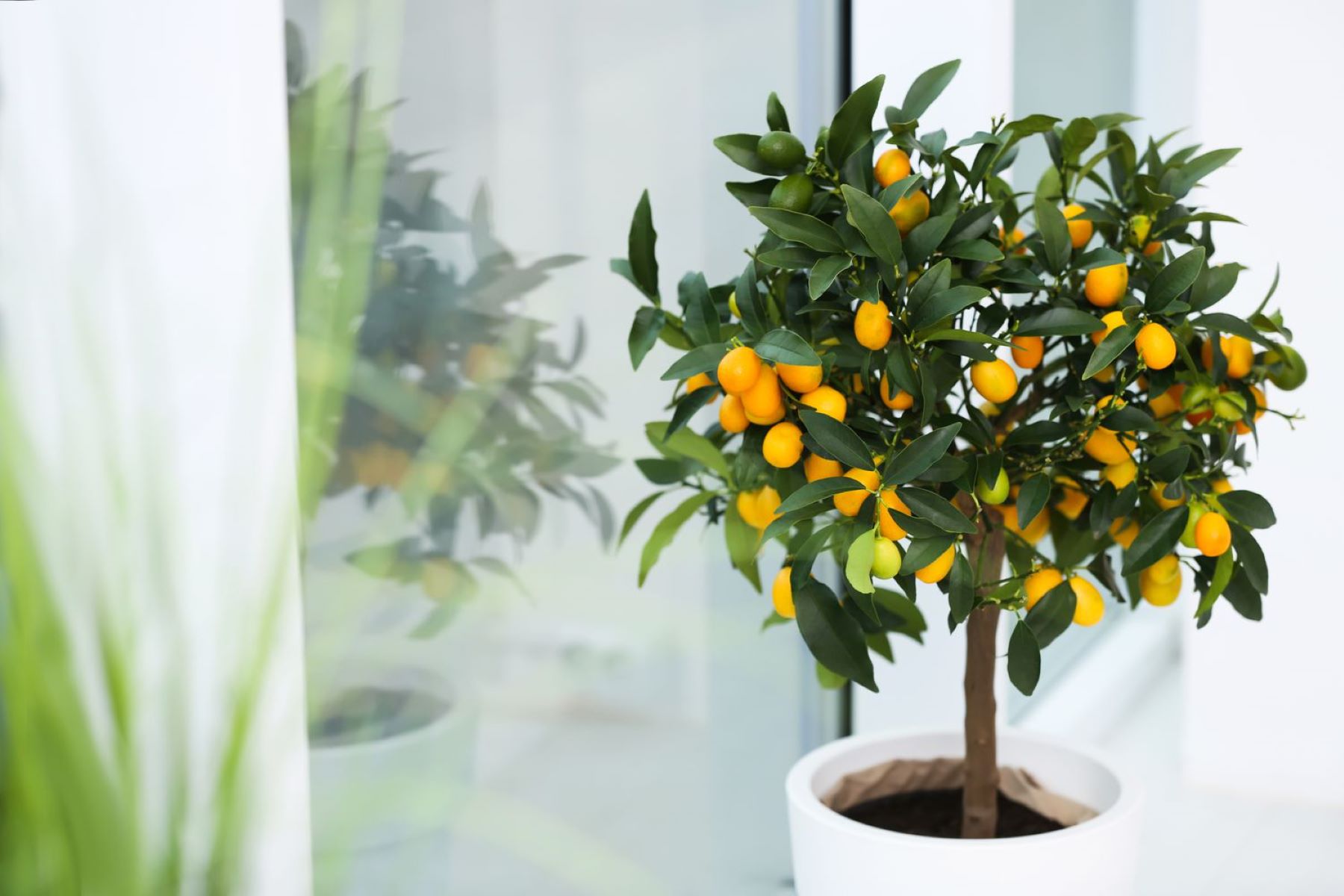


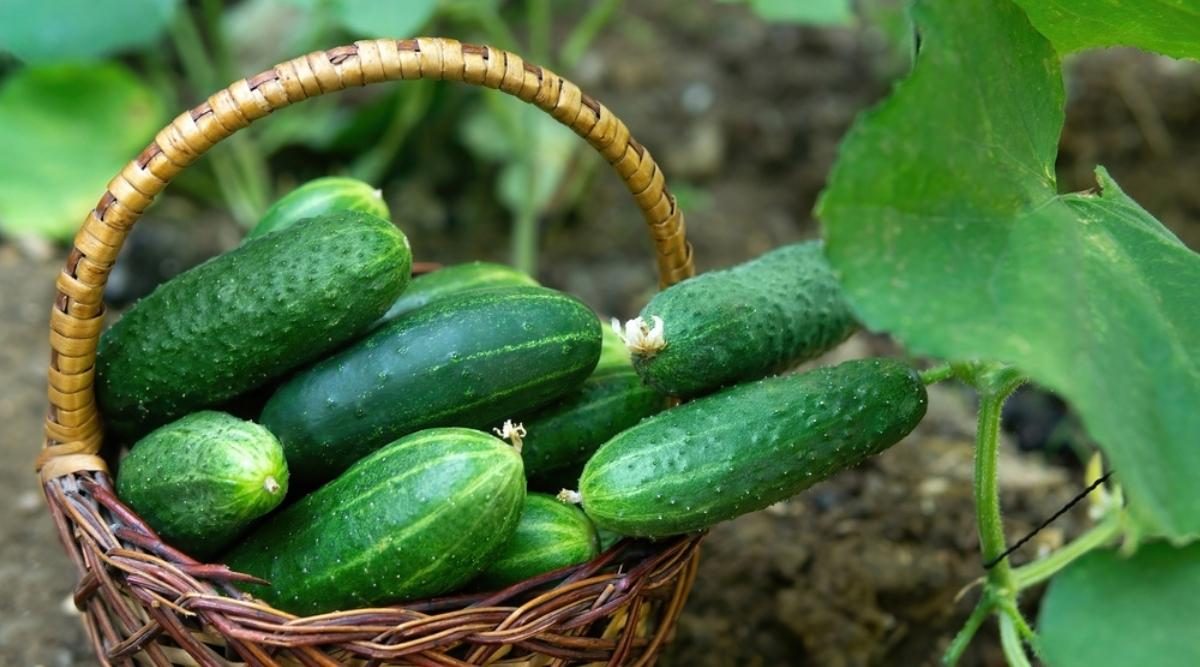

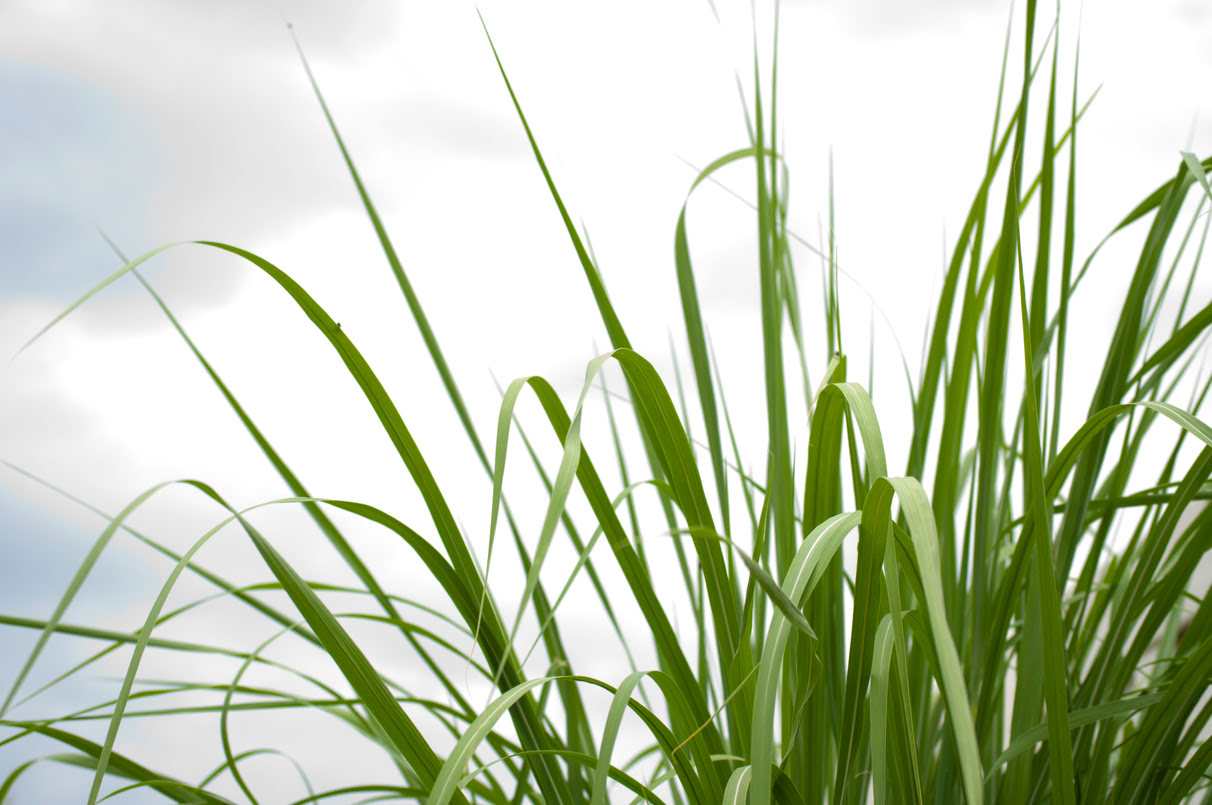
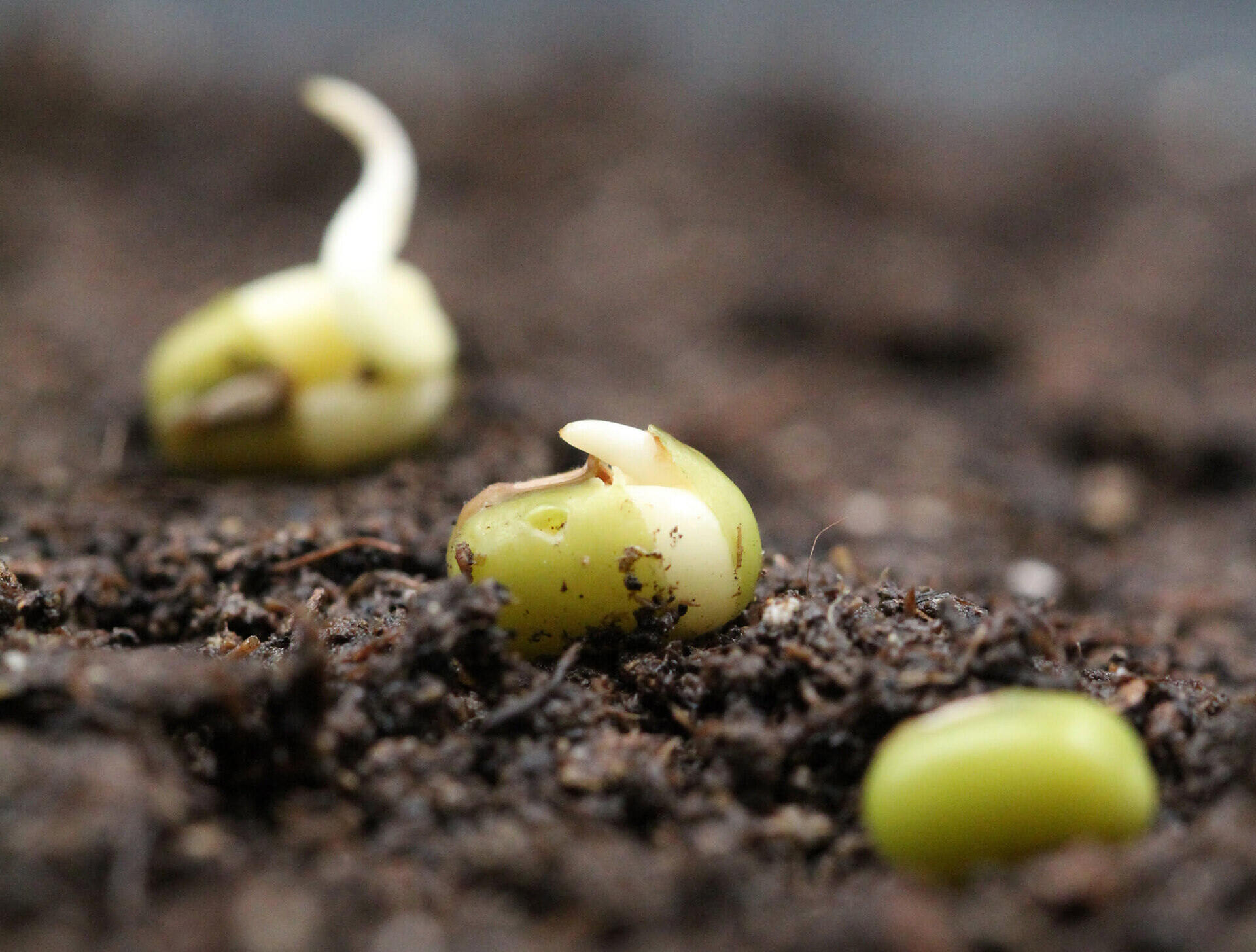

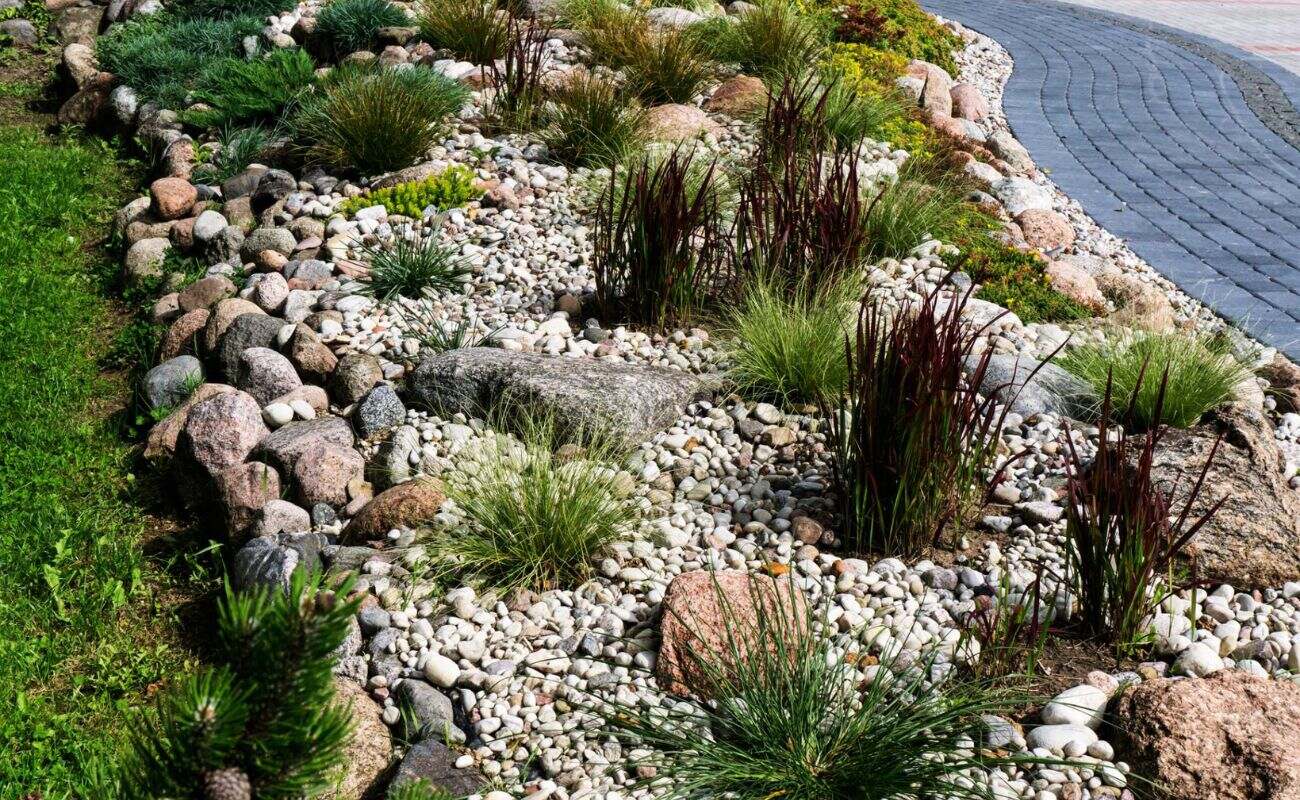




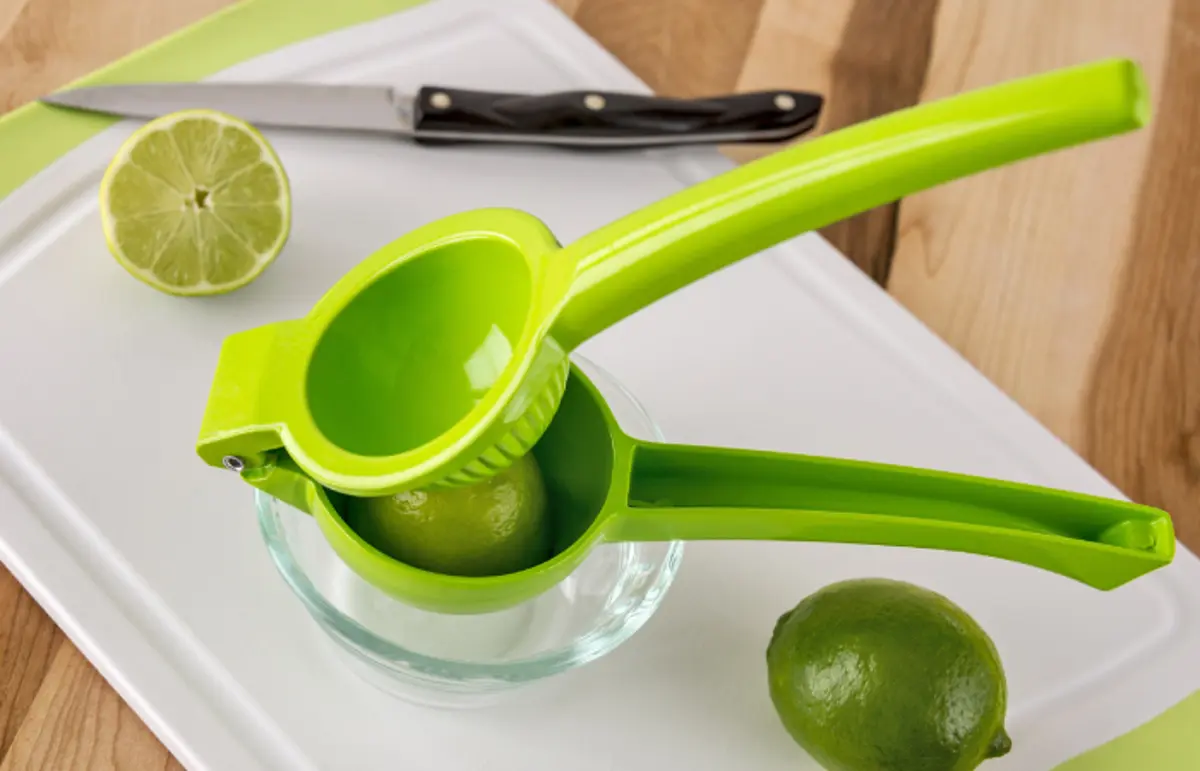

0 thoughts on “What Does Garden Lime Do”